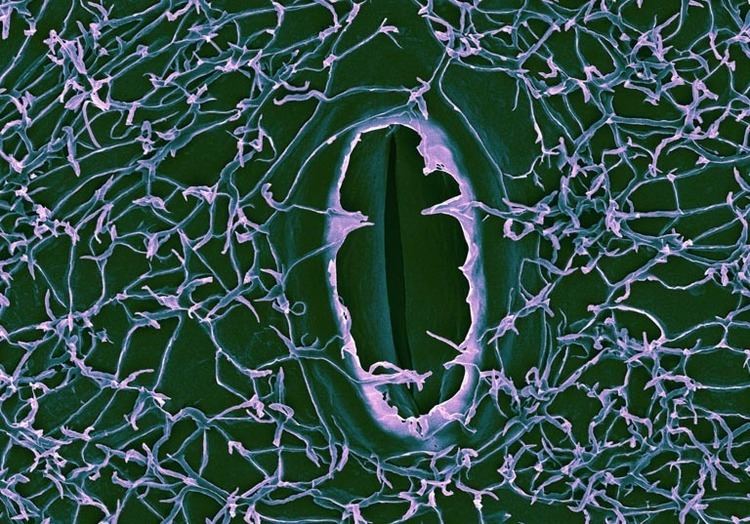 | ||
Epicuticular wax is a coating of wax covering the outer surface of the plant cuticle in land plants. It may form a whitish film or bloom on leaves, fruits and other plant organs. Chemically, it consists of hydrophobic organic compounds, mainly straight-chain aliphatic hydrocarbons with a variety of substituted functional groups. The main functions of the epicuticular wax are to decrease surface wetting and moisture loss. Other functions include reflection of ultraviolet light, assisting in the formation of an ultrahydrophobic and self-cleaning surface and acting as an anti-climb surface.
Contents
Chemical composition
Common constituents of epicuticular wax are predominantly straight-chain aliphatic hydrocarbons that may be saturated or unsaturated and contain a variety of functional groups. Paraffins occur in leaves of peas and cabbages, alkyl esters in leaves of carnauba palm and banana, the asymmetrical secondary alcohol 10-nonacosanol in most gymnosperms such as Ginkgo biloba and Sitka spruce, many of the Ranunculaceae, Papaveraceae and Rosaceae and some mosses, symmetrical secondary alcohols in Brassicaceae including Arabidopsis thaliana, primary alcohols (mostly octacosan-1-ol) in most grasses Poaceae, Eucalyptus and legumes among many other plant groups, β-diketones in many grasses, Eucalyptus, box Buxus and the Ericaceae, aldehydes in young beech leaves, sugarcane culms and lemon fruit and triterpenes in fruit waxes of apple, plum and grape Aromatic compounds have been recorded in epicuticular waxes but are generally minor constituents.
Physical properties
These compounds are mostly solids at ambient temperature, with melting points above about 40 C (104 F). They are soluble in organic solvents such as chloroform and hexane, making them accessible for chemical analysis, but in some species esterification of acids and alcohols into estolides or the polymerization of aldehydes may give rise to insoluble compounds. Solvent extracts of cuticle waxes contain both epicuticular and cuticular waxes, often contaminated with cell membrane lipids of underlying cells. Epicuticular wax can now also be isolated by mechanical methods that distinguish the epicuticular wax outside the plant cuticle from the cuticular wax embedded in the cuticle polymer. As a consequence, these two are now known to be chemically distinct, although the mechanism that segregates the molecular species into the two layers is unknown. Recent scanning electron microscopy (SEM), atomic force microscopy (AFM) and neutron reflectometry studies on reconstituted wax films have found wheat epicuticular waxes; made up of surface epicuticular crystals and an underlying, porous background film layer to undergo swelling when in contact with water, indicating the background film is permeable and susceptible to the transport of water.
Epicuticular wax can reflect UV light, such as the white, chalky, wax coating of Dudleya brittonii, which has the highest ultraviolet light (UV) reflectivity of any known naturally occurring biological substance.
Epicuticular wax crystals
Epicuticular wax forms crystalline projections from the plant surface, which enhance their water repellency, create a self-cleaning property known as the lotus effect and reflect UV radiation. The shapes of the crystals are dependent on the wax compounds present in them. Asymmetrical secondary alcohols and β-diketones form hollow wax nanotubes, while primary alcohols and symmetrical secondary alcohols form flat plates Although these have been observed using the transmission electron microscope and scanning electron microscope the process of growth of the crystals had never been observed directly until Koch and coworkers studied growing wax crystals on leaves of snowdrop (Galanthus nivalis) and other species using the atomic force microscope. These studies show that the crystals grow by extension from their tips, raising interesting questions about the mechanism of transport of the molecules.
